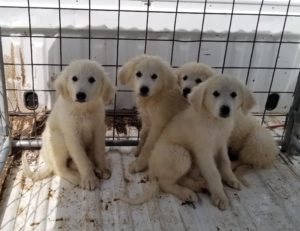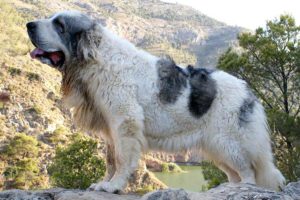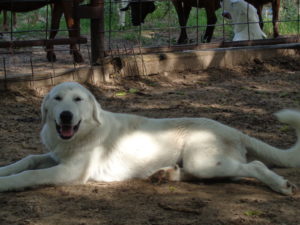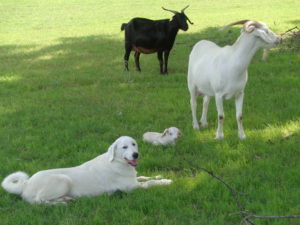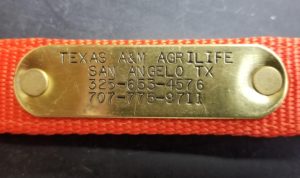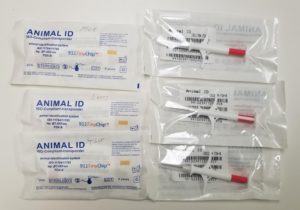Home & Work
Change is inevitable and how you deal with it makes the situation easy or difficult. Sometimes it’s easier to accept the change than fight it if you can.
The boys and I have settled into our new home in town and the dogs are adjusting to city noises. It is important to allow your LGD time to adjust to new situations that they encounter. If you move them to a new location or introduce new stock, make sure they bond with those animals and new surroundings. Make sure they know where feed and water are located.
Progress is continuing on the new kennel structure. We finished half of it, and we hope to have the structure completed by the end of September. Its already been used by Waylon with his injured paw. We will add more tin on the sides once the other half of the structure is in place.
The Fall LGD Field Day in Fredericksburg was cancelled, but we have scheduled monthly webinars in place of it for the foreseeable future. Our October webinar will be on LGD diseases and is scheduled for October 21. Check out our Facebook page to register for the event. @TAMUlivestockguarddog
We recently started an Instagram account also. You can follow us @tamulivestockguarddog. You can also check out past webinars on our YouTube Channel at https://www.youtube.com/channel/UCF7YbP6bNDV7___6H8mifBA
Internal Parasites – Gastrointestinal
This is the fourth part of a multi-part series on canine gastrointestinal parasites. The most common type of internal parasites that an owner of LGDs will encounter are worms. There are five main types of worms that your LGD may encounter: roundworms, hookworms, whipworms, tapeworms, and flukes. Last month we covered whipworms and this month we will focus on tapeworms in LGDs.
There are several types of tapeworms that may infect dogs. Adult tapeworms are segmented worms found in the intestines of dogs. However, they rarely cause serious disease. Most urban dogs eat prepared foods and have restricted access to natural prey and usually acquire the common tapeworm from eating fleas. Livestock guardian dogs on the other hand, have more access to various small mammals, in addition to raw meat and offal from large mammals. The possibility of exposure to several different tapeworm species can be expected in these dogs and regular deworming is required. On sheep ranges and wherever wild ungulates and wild canids are common, livestock guardian dogs may acquire the hydatid tapeworm.
Hydatids are primarily parasites of dogs, coyotes and foxes. Dogs become infected by eating offal containing hydatid cysts. These cysts have thick walls and may enclose many smaller cysts containing small tapeworm heads, giving them a sandy looking appearance. The cysts develop into adult worms once inside the gut of the dog. The adults then produce microscopic eggs with thick shells to protect them from environmental extremes. The eggs are passed into the environment when the dog defaecates and can be spread by insects, wind and water.
Signs of tapeworm infection vary from a failure to digest and absorb food normally, irritability, variable appetite, and shaggy coat to colic and mild diarrhea. There may be no signs in mild cases. Tapeworms typically settle in the small intestine of dogs and may break into segments often found in the dog’s feces. Diagnosis is based on finding tapeworm segments or eggs in the feces or stuck to the hair around the anus of the dog.
To control tapeworms, you need both treatment and prevention of the parasite. Regular flea control is the critical preventive step for dogs. Animals that roam freely usually become reinfected by eating dead or prey animals. Preventing such feeding will limit exposure to other tapeworm species. Make sure to have your dog examined by a veterinarian regularly and use the proper dewormer at least once a year.
Sources: https://www.merckvetmanual.com/dog-owners/digestive-disorders-of-dogs/gastrointestinal-parasites-of-dogs?query=canine%20internal%20parasites#v3202812, https://www.petmd.com/dog/conditions/infectious-parasitic/c_multi_cestodiasis
LGD Puppy Bonding Project
Our newest members of the LGD Bonding Project have arrived! We held a name the puppy contest at the end of August. The winning names were Laverne, Shirley, Lenny and Squiggy. By the time you read this, the four pups will have arrived, and the bonding project will have started. We have added a new phase to the bonding project with two pups being placed in a bonding pen at the Center headquarters to see if dogs bonded in close proximity to buildings, people and vehicles are more likely to roam and seek out those locations vs. dogs bonded away from the headquarters.
The Duke Boys have returned to their owner for further training and bonding. The Legends of Country Music are being moved to their new home in Menard at our research ranch to guard Dorper sheep that have free access to the entire ranch due to a rangeland ecology research study. Only Waylon and Johnny are going, as Willie is being returned to his breeder due to a genetic defect in a front leg. Willie will be guarding livestock on a small piece of property that can provide him the extra care he needs.
LGD Breed Spotlight – Pyrenean Mastiff
While the origin of the Pyrenean Mastiff is not clearly known, it is generally accepted that the breed is descended from dogs brought from Sumeria and Assyria to Spain by the Phoenicians some 3,000 years ago. Due to the remoteness of the various areas of the Pyrenees Mountains and the rest of the region now known as Spain, the original Molosser dogs developed divergently by region into several livestock guardian breeds. In 1659, France and Spain signed a decree splitting ownership of the Pyrenees Mountains with the northern area becoming French territory, and the Southern area remaining Spanish territory. The French area further refined their mastiff developing a white, longer-haired breed, the Pyrenean Mountain Dog (Great Pyrenees), that possessed a more refined head and stature. The Pyrenean Mountain Dog enjoyed widespread recognition due to its popularity and strong breeding programs, while the Spanish mastiffs in the south continued their work as livestock guardians and remained more massive, primitive, and less homogenous.
In the 1930s and 40s with the disappearance of the wolf and bear from the Pyrenees Mountains, the new reliance on rail to transport sheep, the Spanish Civil War followed by World War II, and a scarcity of food, these noble dogs became almost extinct. With the return of a pack of wolves to the region in the 1970s, there was once again a need for these dogs, now known as the Pyrenean Mastiff. A breeding program was designed by enthusiasts that brought the breed back.
Pyrenean Mastiffs have a dense and moderate in length coat that is bristly in texture. Their hair is usually 2-3 inches in length. Their double coat color is basically white, with a well-defined mask, and sometimes irregularly distributed, clearly outlined patches of body color that match the mask. The most desirable color is snow white with patches of medium grey, intensive golden yellow, brown, black, grey-silver, light beige, sandy or marbled. The dogs mask should be clearly defined. The tip of the tail and the lower parts of the legs are white. They can handle dry heat, but humid climates are uncomfortable for them.
Pyrenean Mastiffs are large dogs starting in height at 28 inches with no upper height limit. They can weigh between 120-240lbs making them one of the larger livestock guardian dog breeds. This large size can lead to a healthy appetite to maintain its body condition. Being extremely large, Pyrenean Mastiffs are excellent fence climbers and need quality fences to keep them confined. Double dew claws are also common in this breed. While relatively rare, the breed has spread throughout the world with somewhere between 4,000 and 6,000 dogs worldwide.
Sources: Dohner, Janet Vorwald. Farm Dogs: A Comprehensive Breed Guide to 93 Guardians, Herders, Terriers, and Other Canine Working Partners. Storey Publishing, 2016, https://www.ukcdogs.com/pyrenean-mastiff , http://pmusa.pyreneanmastiffclubs.org/default.aspx
Breeder Profile
This month’s LGD breeder is Katy Siepert from Hamilton, Texas.
Q: Describe your operation/ranch.
- How many LGDs do you currently own?
- Explain your LGD program.
A: My husband and I have a small operation of around 150 sheep and the same number of goats. We have three dogs that we have owned a while, but also have several pups in training. The older dogs are great for starting the pups, but one new pup is about enough for an adult dog to train. Trudy, my oldest dog, had ten pups this time around. So right now, some of the pups are with the older dogs, but the rest are
on goats and sheep supervised by me.
At about 8-9 weeks we start teaching them to lead and tie. This makes it easier to watch them and correct them as they are put with goats or sheep. At around 10 weeks they are doing well. They aren’t staying out full time but for several hours. By this time, it’s gotten much easier to keep them out with the herd, and the dogs are concerned about the goats or sheep. This summer was hard because even though these Akbash pups are short haired, they get hot very easily. If I hadn’t had a creek for them to cool off in, I don’t know I would have persuaded them to stay out in that 106-degree heat!
Q: What got you started in breeding LGDs?
A: Town dogs were killing my goats. I didn’t really like dogs and had my doubts. I bought two grown Anatolian/Pyrenees crosses. One of them was unbelievable. They were not like any other dogs I had ever known. Smart to the bone. Unbelievable. She chased my neighbor’s dog back to their house – a no good Heinz variety – but the owners to this no count dog shot my wonderful dog. I never forgot her. I thought she was one of a kind. It turns out these dogs are so much smarter than any other dog. They don’t really “obey” but they do more. They figure out what you want by watching a few seconds and then they help. For example, if you are trying to get goats or sheep across a creek, they walk out in the water, turn around and walk back to the bank so the goats or sheep will follow. I have seen it time after time.
Q: How long have you bred LGDs?
A: I have been raising livestock guardian dogs for about 30 years now.
Q: Do you prefer a specific breed of LGD?
A: Yes, Akbash as they are resilient enough as pups that a strong head butt from a mean mama goat or sheep won’t discourage them from coming back around, yet sensitive enough that they learn quickly to stay away from their babies. Akbash truly love their herd which is essential in protecting them. In the pasture, adult Akbash can be found near the herd under a shade tree or maybe right in the middle of the herd. They don’t venture far.
Q: What breed of LGD do you raise?
A: The Akbash breed is compassionate, protective, and energetic. It’s hard to get all three of these in any other lives
tock guardian dog breed as far I as I am concerned.
Q: What is the one thing you wish you knew before starting to breed LGDs?
A: One of the most important things I have learned and would recommend to a new user of LGDs is to not get too many dogs on a herd of goats or sheep. They like to stay busy and lack of work will lose their interest, especially younger dogs. If you want to keep them working and aren’t sure how many dogs are needed, start with a low number. Equally important is when a young pup comes back to the barn, tie them up! Make it a treat to go out with the herd. Don’t let them become barn dogs! A
dog that saves their owner money from fewer lost goats or sheep is more appreciated than a dog that lies around at the barn.
Q: What is the number one thing you recommend to a new LGD user?
A: The most important thing I would recommend to a new LGD owner is to give their dog or pup a strategy. At least for a while pen the goats or sheep at evening and feed both the dogs and the sheep at the same time. The sheep will get in the habit of coming in at the same time and the dogs learn to stay with them. If the dogs come in early without the sheep or goats, tie them up, but don’t feed them until the sheep come in. They will learn that they only eat when they are with the goats or sheep.
Q: What is your favorite LGD or LGD story and why?
A: Every situation is different, so each person must design a program for themselves. When the dog understands what his owner wants it all begins to click. Nothing can compare to the comfort in knowing this animal loves your herd as much as you do.
LGD Timely Tips
Every Tuesday check out our Facebook page @TAMUlivestockguardog for Tuesday’s LGD Tip of the Week!
- Purchase collars with ID tags attached to them to make returning your LGD easier if the roam.
- Make sure to ID chip your LGD in case it is lost and taken to a veterinarian or animal shelter. Most cost about $40 which is a low cost to pay to make sure your LGD is returned to you should it be taken by a person rescuing them from the side of the road.
- Use a GPS tracker to easily locate your LGD 24 hours a day. We are currently using the Oyster by Digital Matters.
To provide feedback on this article or request topics for future articles, please contact me at bill.costanzo@ag.tamu.edu or 325-657-7311. The Texas A&M AgriLife Livestock Guardian Dog Program is a cooperative effort by Texas A&M AgriLife Research and the Texas Sheep and Goat Predator Management Board.
Follow us on Facebook: https://www.facebook.com/TAMUlivestockguarddog/
Follow us on Instagram: @tamulivestockguarddog
Follow us on YouTube: https://www.youtube.com/channel/UCF7YbP6bNDV7___6H8mifBA




